Lewa Wildlife Conservancy
Lewa Wildlife Conservancy covers 250km² (25,000 hectares) in the corner of Kenya’s Meru County, bordering Laikipia and Isilio counties to the west and north, respectively. Though technically situated in a separate county, Lewa is a part of the wider Laikipia landscape. Most of the conservancy lies on the Laikipia Plateau at altitudes of over 1,500 meters.
Just 40 km to the south, the jagged figure of Mount Kenya looms on the horizon, its rolling foothills imparting a dramatic topography to Lewa.
How do I get to Lewa?
By Road: The conservancy is only an hour’s drive from Nairobi. Head out through the Thika road. Pass through Thika, Makuyu and Karatina. Turn right before Nyeri Town (about 16km before the town there are signs to Buffalo Springs and Samburu).
Pass through Naro Moru, Nanyuki, and Timau. Approximately 15km after Timau is the Meru/Isiolo junction. Turn left at this junction heading towards Isiolo. Approx 3km further on at the bottom of the hill on the left-hand side is the main entrance to the Lewa Wildlife Conservancy.
By Air: The most common route is flying from Nairobi’s Wilson Airport, which primarily handles domestic flights. Several airlines, such as AirKenya, Safarilink, and Tropic Air Kenya, operate scheduled flights to Lewa Downs Airstrip, located within the conservancy. The flight duration is approximately 1 hour.
Upon landing at Lewa Downs Airstrip, you will be met by staff from the conservancy who will transport you to your lodge or camp. The drive from the airstrip to most lodges within the conservancy takes about 10 to 30 minutes.
What animals are in Lewa?
Lewa Wildlife Conservancy hosts a wide variety of wildlife, including endangered species like black rhinos, Grevy’s zebras, and wild dogs. Visitors can also see elephants, giraffes, lions, hippos, buffalo, and smaller animals such as monkeys and aardvarks.
With over 500 bird species recorded, birdwatching is a popular activity. The Conservancy has diverse plains game, including Reticulated Giraffes, Grevy’s Zebras, and year-round residents like the Somali Ostrich and Guenther’s Dikdik.
Seasonal visitors include the Beisa Oryx and Greater Kudu. The swamp area shelters the rare Sitatunga Antelope and its predator, the leopard. Night safaris offer chances to spot nocturnal animals like bush-babies, aardvarks, and caracals.
How big is Lewa Wildlife Conservancy?
The Lewa Wildlife Conservancy together with the adjacent Ngare Ndare Forest covers over 62,000 acres (250 km2). Wildlife thrives here due to the variety of habitats within the space, including typical acacia woodland, pristine forest, expansive grasslands, and springs.
What will the weather be like?
The days are warm, rising to a maximum of 30 degrees C, but comfortable with minimum humidity, and the evenings are cool with cozy blankets on the beds. Rainfall is mostly in May and November, averaging 360mm per year.
When is the best time to visit Lewa Conservancy?
The ideal times to visit Lewa Conservancy are from June to September and December to March. However, due to climate change, the seasons have become less predictable, so as long as the camps are open, wildlife viewing is likely to be good.
For most of the year, it’s the dry season, which is perfect for safaris as animals tend to gather around water sources, making sightings more frequent. But when the rains come, the landscape undergoes a dramatic transformation, with dry, brown grasslands turning lush and green. Both locals and wildlife welcome the arrival of the rains.
The primary rainy season, from April to June, brings unpredictable weather that can cause last-minute cancellations of excursions. The “short rains” occur between October and December and may briefly disrupt safaris, but these showers are usually brief and last just a few hours.
What other parks and conservancies can I visit nearby?
Lewa Conservancy is surrounded by several notable parks and conservancies that are worth visiting, each offering a unique experience. Some of those parks are:
Borana Conservancy, located adjacent to Lewa, provides a seamless wildlife experience with no fences between the two. Borana is renowned for its rhino conservation efforts and stunning landscapes, making it a great spot for activities such as game drives, horseback riding, walking safaris, and mountain biking. Since it shares a boundary with Lewa, you can easily explore both areas without requiring long drives. Click Here for more details.
Meru National Park, about 60 kilometers east of Lewa is known for its remote and rugged beauty. The park offers diverse landscapes, including rivers, swamps, and savannahs, and is home to the “Big Five.” Meru gained fame through the story of Born Free, set in the park, which tells the tale of Elsa the lioness. It’s a fantastic destination for those seeking a more off-the-beaten-path safari experience with rich wildlife and fewer crowds. Click Here for more details on the park.
Samburu National Reserve is located to the north, around 70 kilometers from Lewa, and is a park celebrated for its unique wildlife. Samburu’s arid landscape is home to species not commonly found in other parts of Kenya, such as Grevy’s zebra, reticulated giraffes, and the gerenuk. Visitors to Samburu can also enjoy cultural interactions with the Samburu people, adding an enriching human element to the wildlife adventure. Click Here for more details.
Ol Pejeta Conservancy, located 50 kilometers south of Lewa, is a major hub for conservation in Kenya. Ol Pejeta is home to the last two northern white rhinos on Earth, as well as a chimpanzee sanctuary. The conservancy is known for offering immersive experiences like lion tracking and night game drives, giving visitors a deeper understanding of the conservation challenges facing African wildlife. Click Here for more details.
Mount Kenya National Park is about 50 kilometers southwest of Lewa. The park is centered around Africa’s second-highest peak, Mount Kenya, and offers hiking and climbing opportunities for various skill levels. Aside from trekking, the park’s lower slopes are rich in wildlife, with lush forests, high-altitude lakes, and pristine ecosystems that make it a must-visit for nature enthusiasts. Click Here for more details.
Kalama Conservancy is located 60 kilometers from Lewa Conservancy. Kalama is a community-owned conservancy that provides a quieter, more exclusive game-viewing experience. It’s also a great place to engage with the local Samburu communities, offering cultural insights along with wildlife viewing.

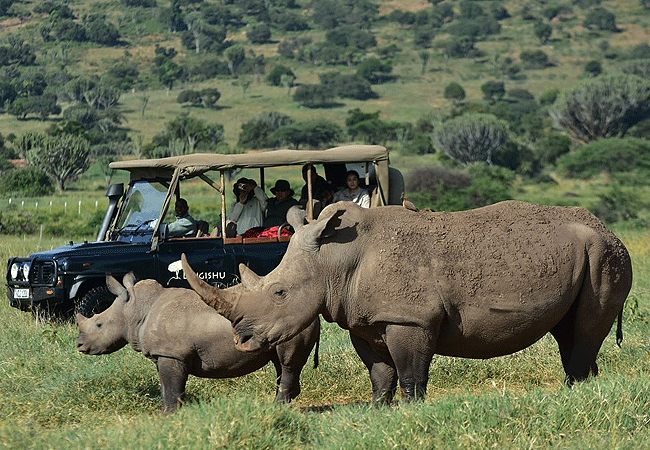


Lewa Wildlife Conservancy Animals & Birds
Lewa Wildlife Conservancy is home to an incredible variety of wildlife, making it a premier destination for animal lovers and safari-goers alike. One of the most iconic species in Lewa is the rhino, with the conservancy currently housing 248 of these magnificent creatures. Both black and white rhinos can be found here, and the thriving population is a testament to the suitable habitat Lewa provides for these majestic animals.
Another remarkable species that roams Lewa’s landscape is the Grevy’s zebra. Known for its striking appearance, this zebra stands out with its tall stature, narrow stripes, and large, rounded ears that resemble Mickey Mouse. Once numbering over 15,000 in the late 1970s, the population of Grevy’s zebras has now dwindled to just 3,042, making their presence in Lewa all the more special. Lewa is one of the few places in the world where this endangered zebra species can still be seen.
Lewa is also a crucial migratory hub for elephants, with around 400 elephants passing through the conservancy, depending on the time of year. These massive animals follow ancient migratory routes, and Lewa plays a pivotal role in ensuring they have a safe passage, with efforts like the construction of an elephant underpass along the Meru-Nanyuki highway. This allows the elephants to continue their migration without disruption from human activities.
The big cat population in Lewa is another major attraction. The conservancy is home to 53 lions, the “King of the Jungle,” who reign over the savannahs and plains. These apex predators are an integral part of the ecosystem, maintaining the balance of prey species across the landscape.
Cheetahs, the fastest land animals, also find an ideal habitat in Lewa. The open plains and expansive savannahs are perfect for these sleek hunters, who rely on speed and agility to catch their prey. There are currently 8 cheetahs within Lewa, and their high-speed chases are a thrilling spectacle for visitors lucky enough to witness them.
Lewa also hosts one of the highest populations of hyenas in the region, with around 150 individuals making the conservancy their home. Known for their distinctive laugh-like calls, hyenas are formidable predators and scavengers. Their role in cleaning up carcasses left by other predators helps keep the ecosystem balanced and healthy.
Though more elusive, leopards are present in Lewa as well. These solitary and secretive animals are masters of stealth, and spotting one in the wild is a rare and exciting experience. The current leopard population in Lewa is estimated at around 18 individuals, and their shy nature makes them one of the most sought-after sightings for visitors.
Wild dogs, also known as African-painted dogs, are critically endangered and have experienced sharp population declines across Africa. Though they are only occasional visitors to Lewa, their presence in the conservancy is a hopeful sign. These social animals, known for their cooperative hunting tactics, are highly endangered, making any encounter with them a truly special experience.
In addition to these well-known predators, Lewa is home to several “Northern specialty species,” which are uniquely adapted to the hot and arid climates of northern Kenya. These species include the reticulated giraffe, recognizable by its strikingly patterned coat; the Somali ostrich, distinguished by its blue legs and neck; the Beisa oryx, a large antelope with long, straight horns; the gerenuk, a long-necked antelope that stands on its hind legs to reach high foliage; and, of course, the endangered Grevy’s zebra.
Birdlife in Lewa is also incredibly diverse, with 493 recorded species, making it a haven for birdwatchers. The reticent ostrich and majestic falcons are among the many bird species that call the conservancy home, creating unforgettable moments for those exploring the skies above the landscape.
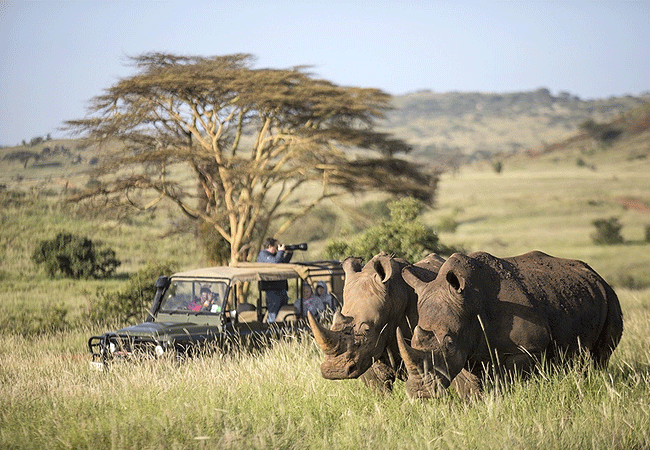




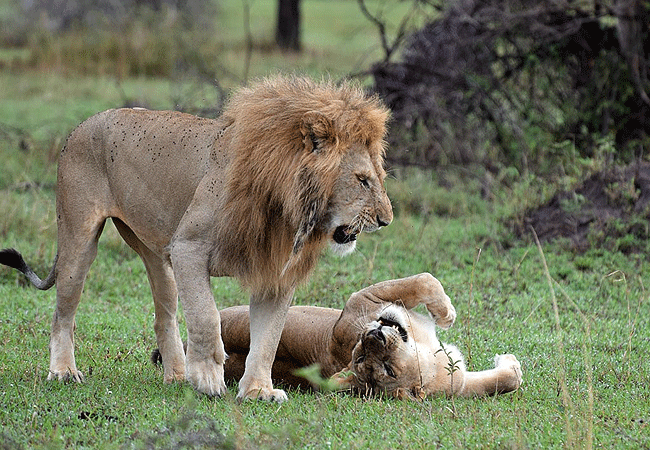
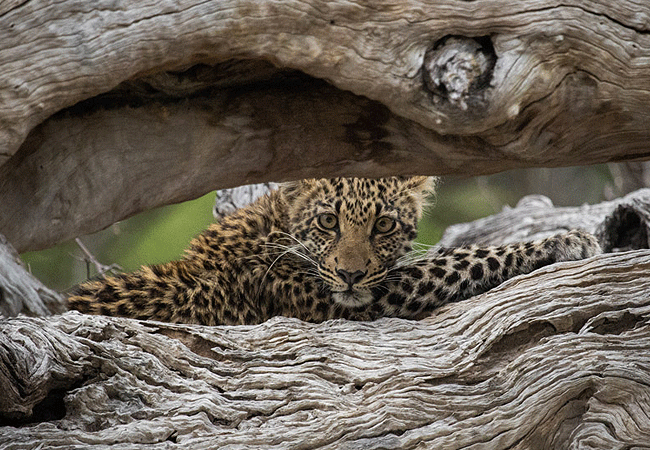
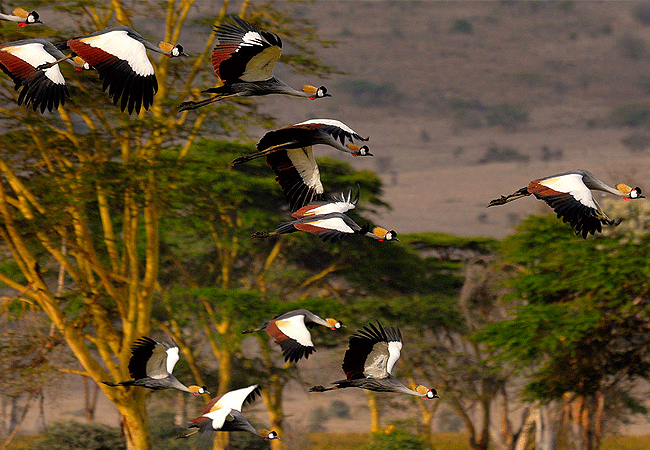
Lewa Wildlife Conservancy Activities | Attractions | What to Do
Cultural visits to local Samburu villages
Cultural visits to local Samburu villages in and around Lewa Wildlife Conservancy offer a unique opportunity to experience the traditional lifestyle of the Samburu people. These visits allow guests to engage with the Samburu community, learning about their customs, rituals, and daily lives. Visitors can witness traditional practices such as beadwork, herding, and ceremonies, as well as hear stories about their close relationship with the land and wildlife.
During a visit, you can tour homesteads (known as “manyattas”), observe traditional dances, and even interact with the village elders and warriors (known as “moran”). The Samburu people are semi-nomadic pastoralists, and much of their culture revolves around cattle herding, similar to their close relatives, the Maasai.
Proceeds from these cultural visits often go towards community development projects, including education and healthcare, making them not only an enriching experience but also a way to support the local community.
Day and Night Game Drives
With the whole of the eastern half of the Conservancy to itself, and with strict limits on tourism numbers with the Conservancy, guests can enjoy an almost private game viewing experience. Although a vast area, the Conservancy is fenced, (fencing of wildlife areas is very unusual in Kenya), specifically to protect the rhino. The gamedriving is outstanding with plentiful, rhino, elephant, buffalo, the rare Grevy Zebra, and resident predators, to a backdrop of beautiful views of snow-capped Mt. Kenya.
A team of fully qualified driver guides is on hand for vehicle safaris across the conservancy. The specially adapted open vehicles allow for excellent viewing but it is the richness of the game that our guests talk about.
All the main safari predators, the rare Grevy zebra and of course the threatened rhino can be viewed in abundance. The game drives are on your terms using our experience and are not limited to daylight hours. We often explore the conservancy by night using a spotlight and the full moon when it obliges.
Guided Game Walks
Guided game walks in Lewa Wildlife Conservancy offer a thrilling and immersive way to explore the African wilderness on foot, providing a more intimate connection with nature compared to traditional game drives.
Accompanied by an experienced guide, visitors can walk through the conservancy’s diverse landscapes, from savannah plains to rolling hills, while observing wildlife up close and learning about the ecosystem, flora, and fauna.
During these walks, you might encounter species like giraffes, zebras, antelopes, and occasionally rhinos and elephants, all while your guide shares insights about animal behavior, tracking techniques, and the smaller details of the environment, such as plants and insects that are often overlooked from a vehicle. The walk is not only about spotting large wildlife but also about appreciating the intricacies of the natural world, including birdlife, tracks, and signs of animals.
Safety is a priority, and your guide will ensure a safe distance from wildlife while providing an educational and enriching experience. Guided game walks are typically offered in the cooler parts of the day, such as early mornings or late afternoons, and can be arranged through your lodge or tour operator. This activity is ideal for those seeking a slower-paced, contemplative adventure in the heart of Lewa.
Visit to the anti-poaching tracker dogs
A visit to the anti-poaching tracker dogs in Lewa Wildlife Conservancy offers an incredible behind-the-scenes look at the vital conservation work being done to protect wildlife. Lewa’s dedicated anti-poaching unit utilizes highly trained tracker dogs, primarily bloodhounds and Belgian Malinois, to track poachers and locate illegal wildlife products. Visitors can meet the canine team and their handlers to learn how they work together to combat poaching in the conservancy.
During the visit, you can watch a demonstration of the dogs’ remarkable tracking skills as they follow scent trails and assist in crime scene investigations. These dogs have played a critical role in reducing poaching incidents and ensuring the safety of endangered species, such as black rhinos and elephants, within Lewa.
The experience highlights the integration of modern conservation techniques with traditional wildlife protection efforts, offering insight into how Lewa’s security team works to safeguard its wildlife.
Ngare Ndare Canopy Walk
The Ngare Ndare Canopy Walk is a captivating experience located in the Ngare Ndare Forest, adjacent to Lewa Wildlife Conservancy. The 450-meter-long walkway is suspended about 10 meters above the ground, weaving through the treetops and offering breathtaking views of the lush forest.
It ends at a wooden platform, providing a perfect spot to relax while observing wildlife, including elephants and buffalos, who often visit the nearby river for water. This walk offers a serene escape into nature, especially around sunset when the lighting adds to the magical atmosphere. Click the link below to view our Ngare Ndare Forest Day trip:
Ngare Ndare Forest Hiking Day Trip | Click Here
Helicopter Rides
An opportunity you won’t want to miss – to fly the wilds of Kenya with Air Wilderness. Take off from the airstrip and fly to the snowcapped peaks of Mount Kenya, or fly along the tree tops as you try and spot elephants along the Ewaso N’gero River.
For the true ‘Out of Africa’ experience opt for our open cockpit biplane, and weave through gorges which show off the beauty of Lewa Wildlife Conservancy. Our scenic flights are the best way to discover so much more from the sky.
The Helicopter Scenic Flight takes you by air into Kenya’s northern frontier towards the Aberdare Mountain range and enjoys views of the stunning Karuru and Gura Waterfalls. Your helicopter flight continues by air over the Aberdare National Park before you make your approach to Mount Kenya.
Weather permitting; explore the peaks, lakes, and valleys of this prolific Mountain. East of Mount Kenya your Pilot will choose an ideal spot to land, before proceeding to your final drop-off at your camp/ lodge. Click the following link to find out more about the Helicopter Scenic Flight | Click Here
Camel and Horseback Safaris
Guests can choose beyond the normal safari transport options and see the conservancy from a different view – on the back of a horse or even on the back of a camel! Just a minute’s walk from the lodge, the Lewa Wilderness stables are home to over 30 horses and ponies.
Many guest horses are homebred, while others are retired polo ponies. The horses are well accustomed to the wildlife as, during the day, they enjoy free-range grazing alongside animals such as zebra, giraffe, impala, eland, and baboons.
Many of our horses are used to carrying complete beginners enabling even first-time riders to enjoy the unique experience of riding in the African bush. Riding one of the Lewa Wilderness horses allows you to enjoy the wildlife in its most natural form, without the sound of a car engine or the sight of a road
Alternatively, head on over to our camel guides and once you’ve experienced the swaying movement of the camel standing up from the ground where you’ve mounted, you’ll be led on an ambling walk through the Lewa plains. The soft lulling motion of the impeccably cared-for camels fits in perfectly with the quiet and gentle landscape.
Hiking/Jogging with a Samburu Warrior
In Lewa Wildlife Conservancy, you can enjoy a unique experience of hiking or jogging with a Samburu warrior. This activity combines fitness and cultural immersion, as the Samburu warrior shares traditional knowledge about the landscape, wildlife, and their way of life.
It’s a great way to engage with the local culture while being active, and it’s especially popular for those who want to connect with the area’s heritage while staying at Lewa.
Canoeing & Cycling/ Mountain Biking
Canoeing in Lewa is a tranquil way to experience the conservancy’s waterways. Though not as widely available as in other regions, canoeing can be arranged on select water bodies. It provides a serene opportunity to observe wildlife such as aquatic birds and other animals near the water.
Paddling along the rivers or lakes allows visitors to appreciate the natural beauty of the area while enjoying a peaceful escape from the typical safari activities. This activity is ideal for those looking for a slower-paced, meditative experience while taking in Lewa’s wildlife from a unique perspective.
For those seeking a more active adventure, mountain biking in Lewa is an exciting option. Biking through the conservancy along designated trails gives visitors the chance to explore the savannah and get closer to wildlife like giraffes, zebras, and antelopes.
It’s an eco-friendly way to tour the area, combining fitness with the thrill of seeing animals in their natural habitat. Led by experienced guides, mountain biking not only offers physical engagement but also ensures safety while navigating through wildlife-rich areas. The experience provides a dynamic and personal way to discover the stunning scenery of Lewa.
Visit a school
At Lewa Wildlife Conservancy, visitors can engage with local communities by visiting one of the schools supported by Lewa’s extensive educational programs. These schools benefit from Lewa’s commitment to providing access to quality education, especially in rural areas where resources are limited.
Lewa supports over 20 schools by improving infrastructure, such as building classrooms, libraries, and dormitories, while also facilitating digital literacy through access to tablets and laptops.
During a school visit, you can witness firsthand the impact of Lewa’s efforts to foster environmental stewardship through conservation education, where students learn about wildlife protection and sustainable development.
This initiative plays a crucial role in shaping a generation that values conservation and understands its importance for the future of their communities and the environment.
Participate in Health Outreach
Participating in health outreach in Lewa, located in northern Kenya, involves engaging with the local communities through vital healthcare services provided by the Lewa Wildlife Conservancy.
Lewa manages several clinics that serve over 50,000 people, many of whom would otherwise lack access to medical care. These clinics, situated in remote areas, offer a range of services, including general healthcare, maternal and child health, and disease prevention.
Health outreach programs in Lewa are not just about treatment but also focus on preventative care and education, ensuring that even the most isolated communities receive essential health information and services.
The Conservancy also supports efforts to combat diseases such as malaria and HIV/AIDS through testing and awareness campaigns. Moreover, during the COVID-19 pandemic, Lewa expanded its outreach to mitigate the impact of the virus on the local population,
Bush Breakfasts & Sundowners
At Lewa Wildlife Conservancy, guests can enjoy the quintessential safari experiences of bush breakfasts and sundowners, which add a special touch to their stay. A bush breakfast involves dining al fresco amid the plains, with the beautiful African sunrise as the backdrop. It’s an immersive experience where guests are surrounded by the sights and sounds of wildlife, truly connecting with nature.
Sundowners, a cherished safari tradition, offer the perfect way to close a day of exploration. Guests gather to watch the stunning African sunset with a drink in hand, typically a gin and tonic or a glass of champagne. This serene moment allows for reflection and relaxation while watching the vibrant colors of the sunset sweep across the horizon.
Rhino Tracking
The Black Rhino Tracking Experience is a pioneering walking safari first of its kind in East Africa, providing a unique and exhilarating adventure whilst also allowing guests to contribute to the protection of this iconic species actively.
This is not your average bush walk. Help with conservation on Borana by joining the team of scouts who track and account for all rhinos each morning, often encountering elephants, giraffes, and other wildlife.
The team must set out on foot from various locations across Lewa to see and monitor each rhino on the Conservancy. By joining them on this venture, Lewa Conservancy visitors can learn more about the “behind the scenes” work that goes into the conservancy, how we track and identify rhinos, and take the time to meet the team that keeps them safe.
Birdwatching
Lewa Wildlife Conservancy is a premier birding destination, known for its abundance of northern Kenya specials such as the Somali ostrich, vulturine guineafowl, and the stunning golden-breasted starling. With over 350 recorded bird species, Lewa is a haven for bird watchers.
To fully immerse in birding, it’s recommended to book a private vehicle and inform your accommodation or operator that bird watching is your primary focus, as most game drives are geared towards spotting large animals.
Some of the notable birds you can expect to see include the Amethyst Sunbird, Blue-cheeked and Cinnamon-chested bee-eaters, Golden-breasted bunting, Golden-winged sunbird, Harlequin quail, Hartlaub’s bustard, Hartlaub’s turaco, and Hildebrandt’s francolin and starling. Birding is good year-round, although most lodges close in April and November due to heavy rains.
The best time to visit for birding is from December to March when migratory species are present, coinciding with the Wet season, which brings breeding plumages. For general wildlife viewing, the ideal period is July to September, with December to February also being excellent.
View some of our road and fly-in safaris in Lewa Wildlife Conservancy below:
2-Day Lewa Wildlife Conservancy Luxury Fly-in Safari | Click Here
3-Day Lewa Wildlife Conservancy Luxury Fly-in Safari | Click Here
4-Day Lewa Wildlife Conservancy Luxury Fly-in Safari | Click Here
Lewa Wildlife Conservancy 2 Days 1 Night Road Safari | Click Here
Lewa Wildlife Conservancy 3 Days 2 Nights Road Safari | Click Here
Lewa Wildlife Conservancy 4 Days 3 Nights Road Safari | Click Here

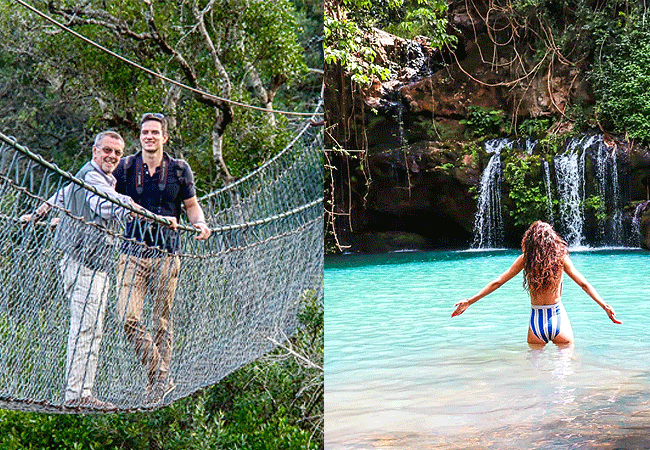

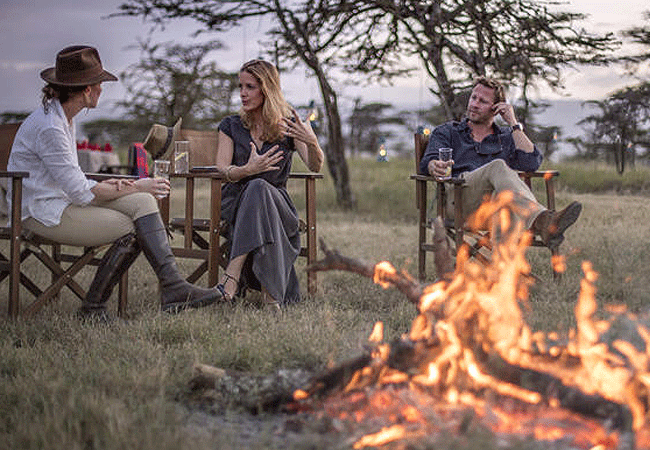
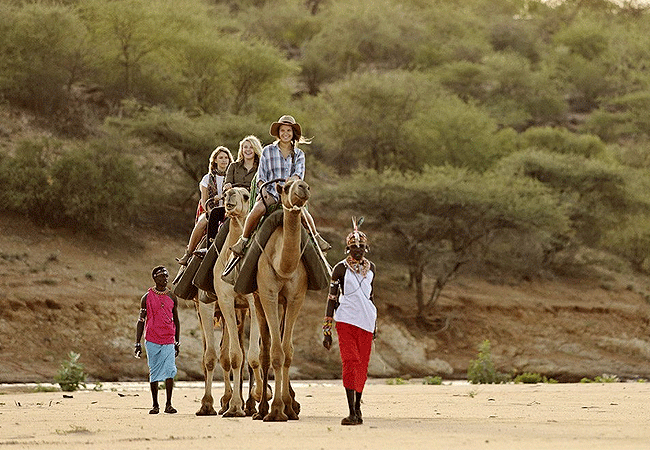
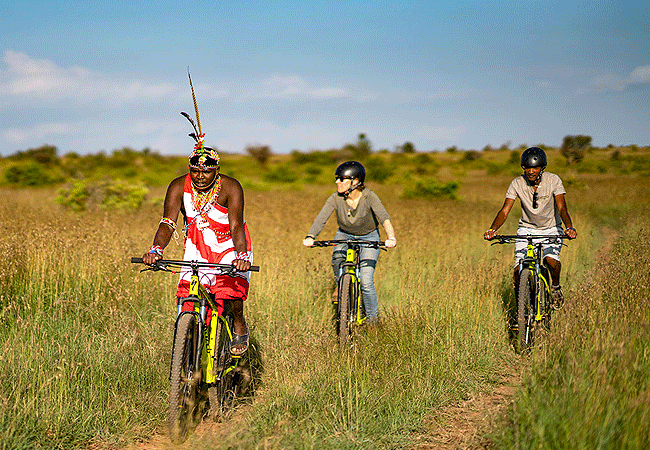
Lewa Wildlife Conservancy Accomodation | Hotels | Lodges | Camps
Lewa Wildlife Conservancy hosts five exclusive lodges throughout the conservancy’s grounds. The accommodations offer their guests authentic and very unique safari experiences. Integral to the conservancy model, all the profits generated from tourism are directed back to Lewa’s conservation and community programs.
Elewana Kifaru House
Elewana Kifaru House Lewa Conservancy is located in Lewa Wildlife Conservancy, on the northern foothills of Mt Kenya; Kifaru House is set on the privately-owned Lewa Wildlife Conservancy. Kifaru is a Swahili word for rhinoceros, a realized by one of Lewa Conservancy’s donors.
The safari lodge is a five-hour drive from Nairobi. The scheduled flight (via Nanyuki) from Wilson Airport flies to Lewa Downs airstrip and it’s an hour’s flight from Wilson Airport. Lewa Wildlife Conservancy serves as a safe refuge for the critically endangered black rhino and the endangered Grevy’s zebra, as well as the elephant, lion, giraffe, wild dog, and other iconic wildlife species in Kenya. The Conservancy is also home to more than 400 species of birds. Click Here for more details.
Elewana Lewa Safari Camp
Lewa Safari Camp Laikipia is situated on the Northern foothills of Mount Kenya on the privately-owned Lewa Wildlife Conservancy (also known as Lewa Downs). Lewa main Airstrip is an hour’s flight from Wilson Airport and a transfer to the lodge takes approximately 40 minutes. Nanyuki Airstrip transfer takes 2 hours to the camp. The driving time from Nairobi takes approximately 5 hours.
The Camp has 13 luxurious tents comprising 11 safari tents and 2 family tents. Three of the safari tents can accommodate triples. Each tent is on raised platforms under thatched roofs and features electric lighting, a large double bed, and an en-suite bathroom with shower and flush toilets. Each family tent has an en-suite master bedroom and a twin room, joined together by a private veranda/sitting area. Each family tent accommodates a family of 5. Click Here for more details.
Lewa Wilderness
Lewa Wilderness Lodge (previously known as Lewa Wilderness Trails or Wilderness Trails Lodge) is situated in a wildlife-rich corner of Lewa Wildlife Conservancy also known as Lewa Downs at the foot of Mount Kenya.
The lodge has 9 beautifully decorated rooms, and 6 cottages tucked into the hillside overlooking the sprawling Eastern Marania Valley, each features fireplaces and verandas and is individually designed. They are perfectly positioned to capture the striking sunrise.
The further 3 garden cottages are cozy yet expansive and are set amongst the beautiful lawn and consist of two en-suite bedrooms and a living area. They are perfect for families or those wanting closer proximity to the pool and main area. Click Here for more details.
Lewa House
Lewa House Laikipia is set on top of a hill in the heart of the 65,000-acre privately-owned Lewa Wildlife Conservancy a sanctuary within Kenya’s Lewa Downs. The bush home has an engaging panoramic view of the rolling landscape of the Conservancy, Mount Kenya to the south the rugged Mathews Range, and the sacred mountain of Ol Olokwe to the north.
The House has 4 single-room cottages and 3 thatched family cottages, each comprising two en-suite rooms and a large shared veranda. The cottage-style rooms are spread out along the hillside, all looking to the expanse of wilderness to the north.
The four single-room cottages are built in a unique design with sustainable, ecological principles in mind whilst still being exceptionally comfortable and spacious, with wonderful views across the surrounding landscape. Click Here for more details.
Sirikoi Lodge
Sirikoi Lodge Laikipia is a luxury safari eco-lodge located on private land within the Lewa Wildlife Conservancy on the Northern hills of Mount Kenya in Laikipia Kenya. Sirikoi Lodge is about 250 km North East of Nairobi.
Driving time from Nairobi to Sirikoi takes about 5 hours while flights from Nairobi to Wilson airport take about 50 minutes. Both scheduled and private charter flights land at Lewa Downs airstrip. Transfer from Lewa Airstrip to Sirikoi Lodge takes 15 minutes.
The lodge has a selection of accommodations from Sirikoi Cottage (2-bedroom villa), Sirikoi House (3 en-suite bedroom villa-perfect for larger groups), and Sirikoi Tented Camp (4 en-suite tents). Click Here for more details.


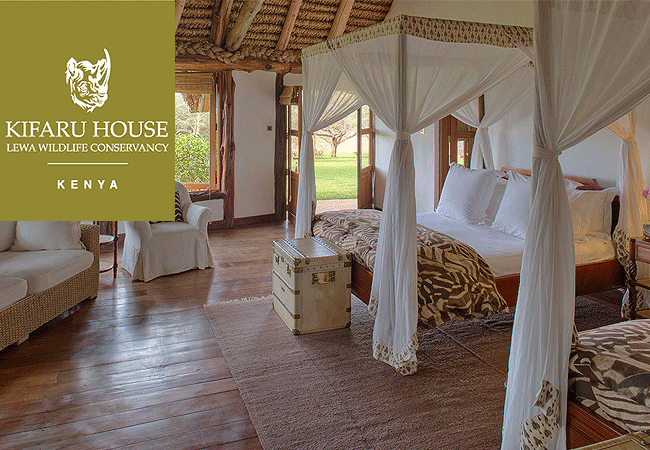
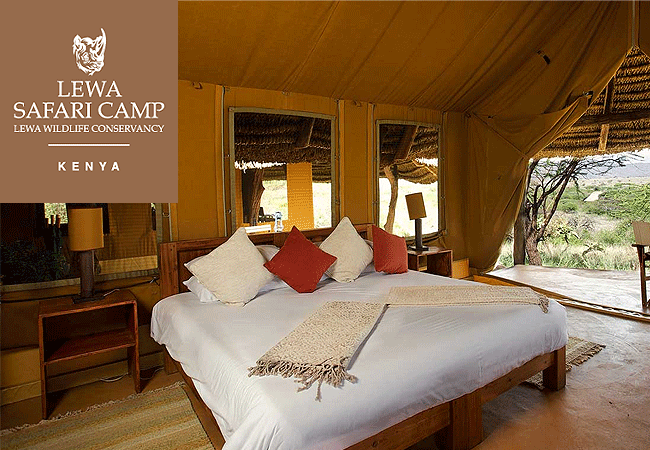

Booking & Reservations Lewa Wildlife Conservancy Contact
Mobile: + 254-721-242-711
WhatsApp: +254-721-242-711
Reservations: +254 718-179-967
Email: [email protected]
Website: https://africanspicesafaris.com
